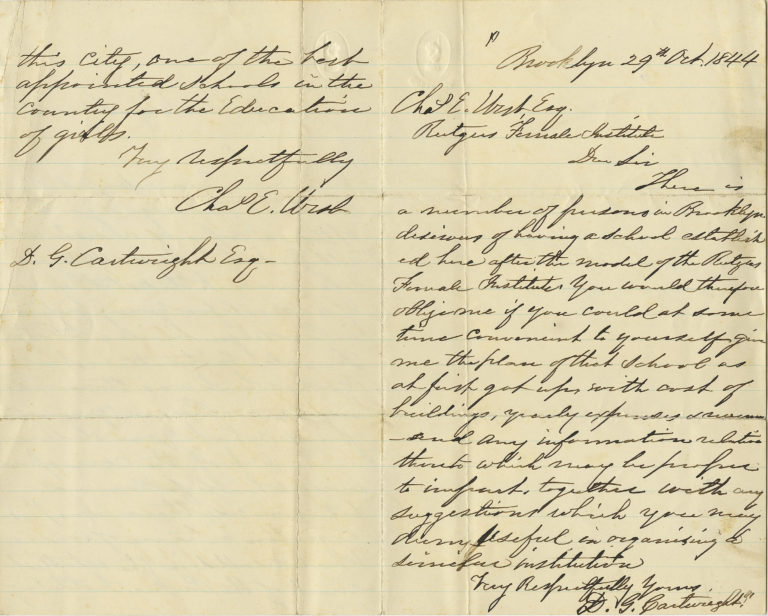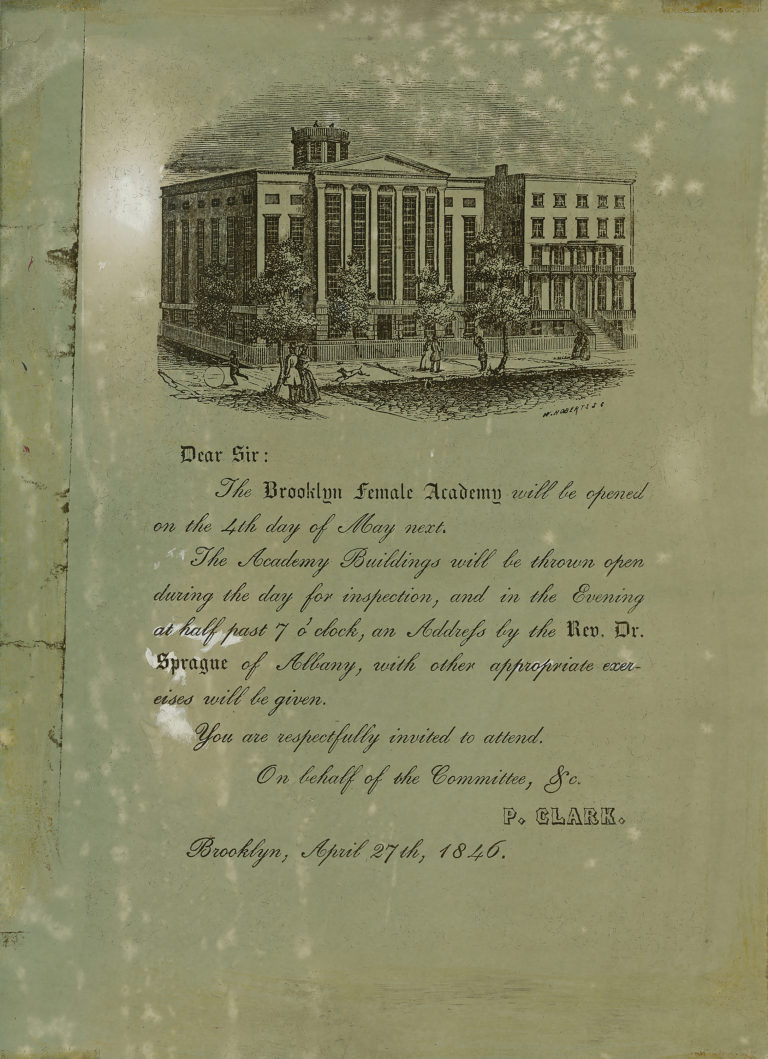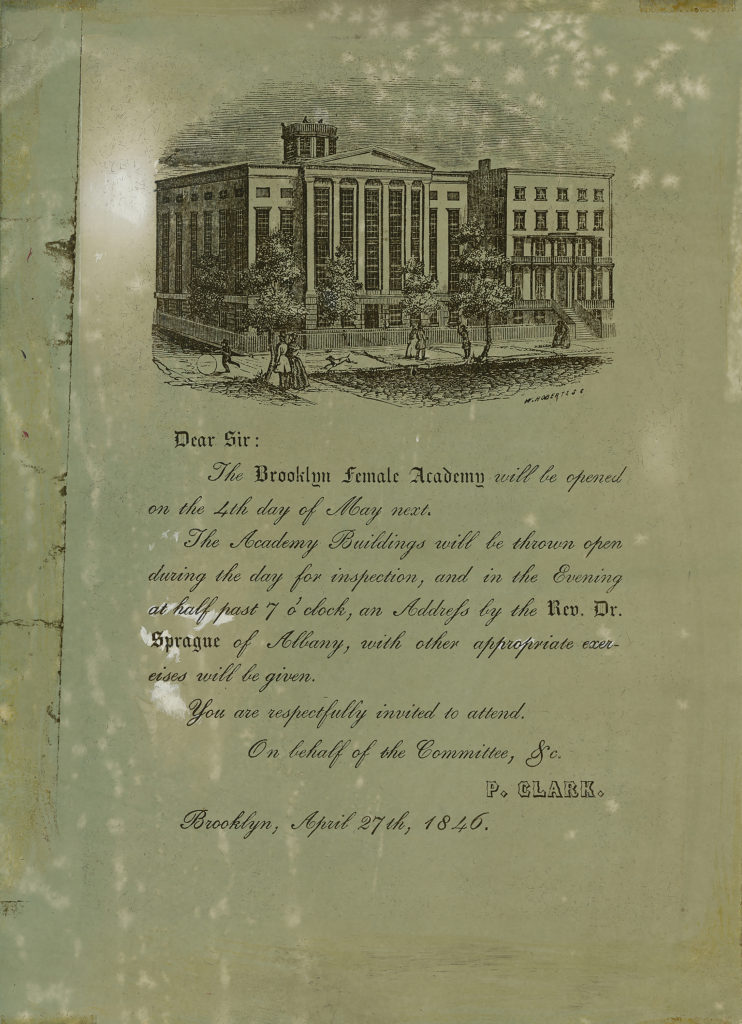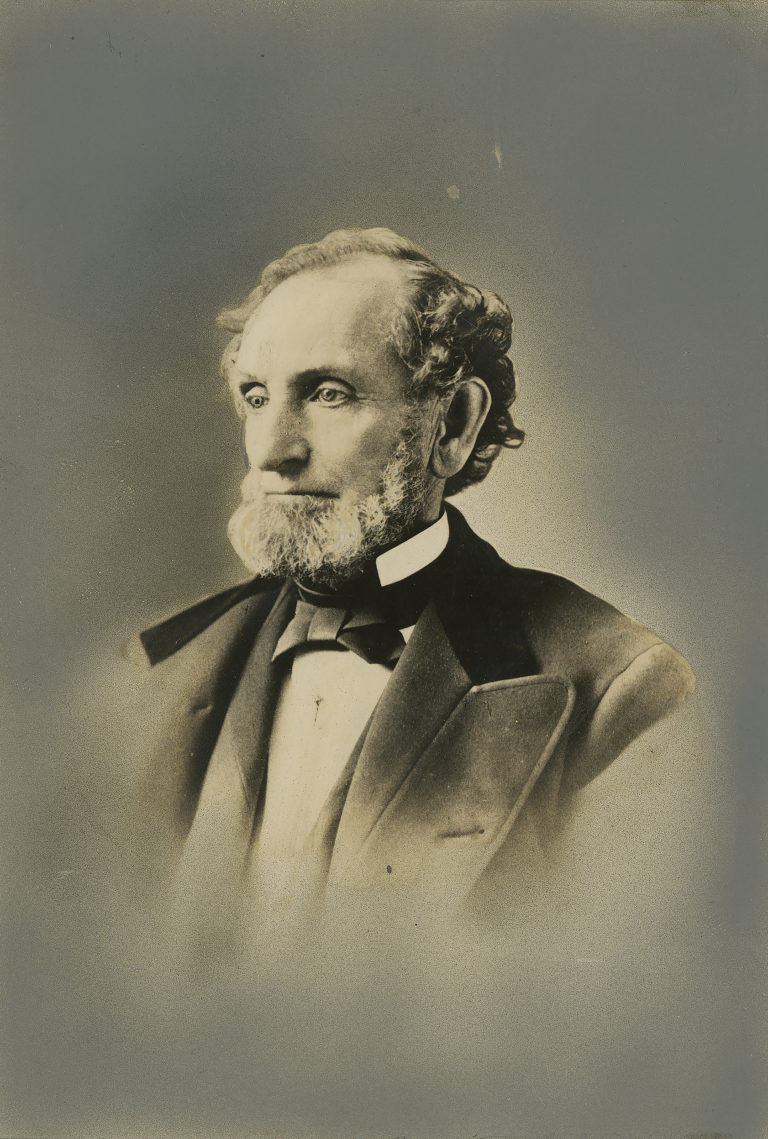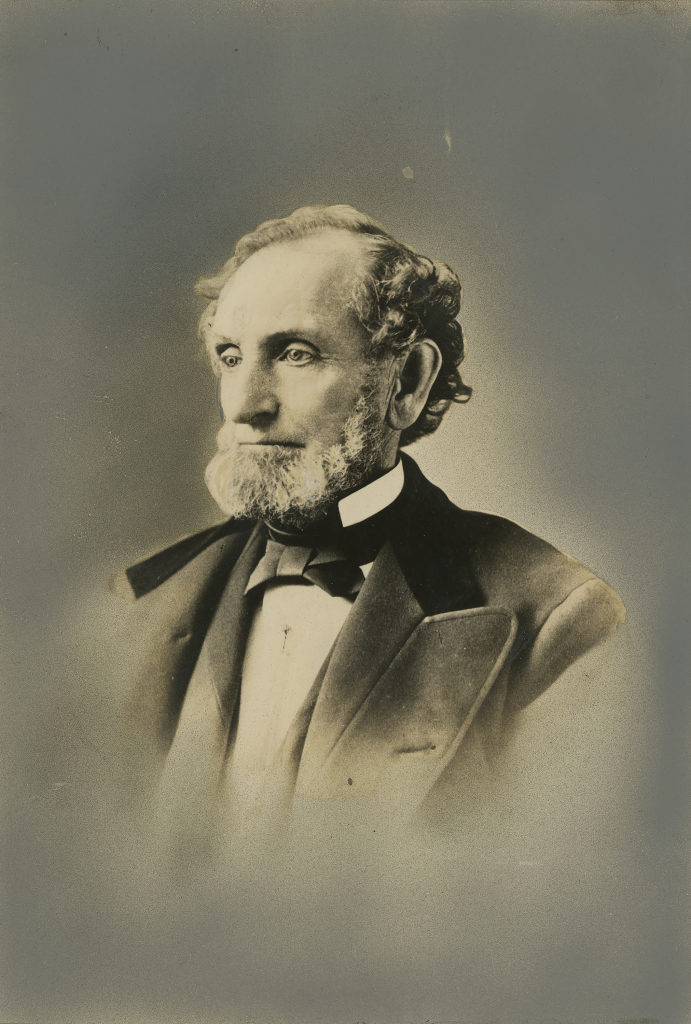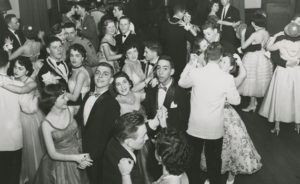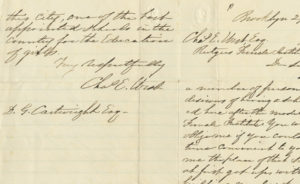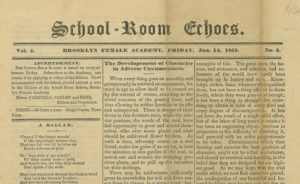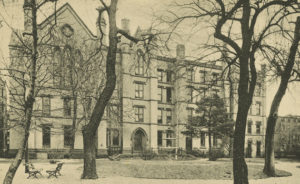The Beginnings of Brooklyn Female Academy
The idea for the Brooklyn Female Academy (BFA) first came at the suggestion of David G. Cartwright. Cartwright, a prominent Brooklyn citizen who had made a career in coastal trade between the United States and South America, believed in the education of women as a tenet of his Quaker faith. In 1844, Cartwright wrote Professor Charles E. West, principal of the Rutgers Female Institute in New York City, inquiring about opening a similar school in Brooklyn Heights.
Encouraged by West, Cartwright called a series of meetings with leading Brooklynites, including merchants and landowners, in order to gauge interest in the school. Residents quickly accepted Cartwright’s idea and future planning meetings were advertised in local newspapers and churches. A planning committee was selected and tasked with soliciting stock subscriptions to fund the school. By the fourth meeting, the committee had raised $24,000 of the $30,000 required to construct the BFA.
BFA was incorporated on May 8, 1845. At the suggestion of William Packer, a wealthy Brooklyn fur dealer and BFA trustee, the school was built on Joralemon Street, between Court and Clinton Streets, where it still stands today.
BFA officially opened to students on May 4, 1846. The school’s first principal was Dr. Alonzo Crittenden. There were 350 students and a 23-member staff that included 19 women. The school offered three levels of education based on three age groups, which included primary education for students younger than eight years old; a midlevel for ages eight to fourteen years; and, finally, a collegiate level for girls older than fourteen. Yearly tuition at BFA originally ranged from $20 to $60, depending on the educational level. BFA was created to provide educational opportunities for the young women of Brooklyn, but the school quickly attracted students from all over the United States.
Related documents
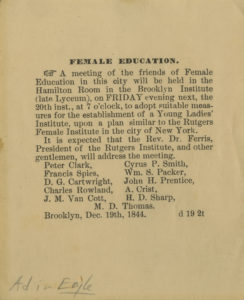
Notice announcing meeting to establish a young ladies' institute in Brooklyn, 1844/12/19
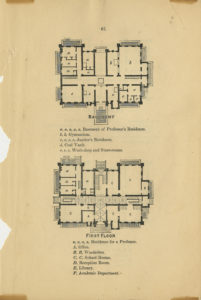
Floor plans of the Brooklyn Female Academy building, 1853
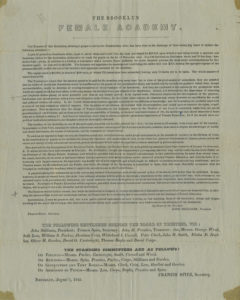
First circular of the Brooklyn Female Academy, 1845
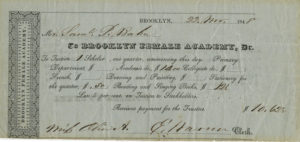
Brooklyn Female Academy tuition receipt, 1848
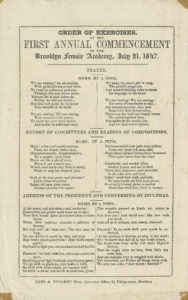
Order of Exercises, at the First Annual Commencement of the Brooklyn Female Academy, 1847/07/21
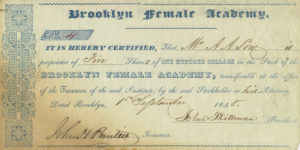
Brooklyn Female Academy stock certificate, 1845
